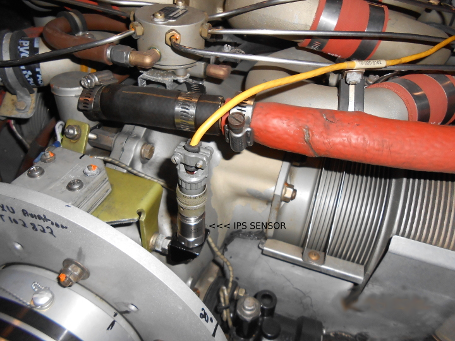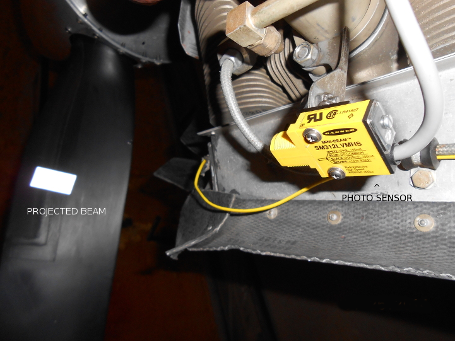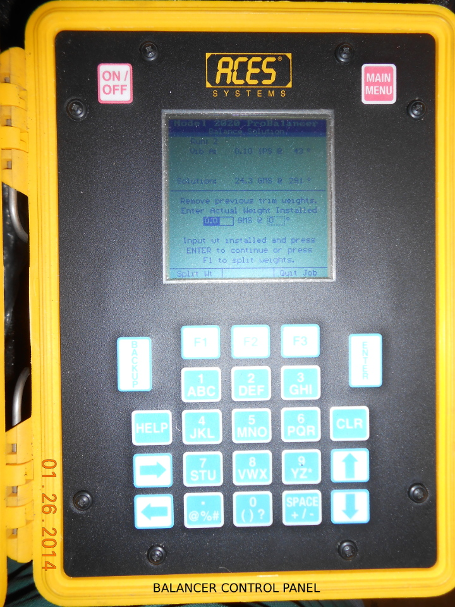Smooth Operator - Dynamic Balancing
January 2015
This month’s ShopTalk will examine the process and derived benefits of dynamic balancing the engine and propeller assembly. The first consideration must be proper propeller indexing, whatever that is?
When an airframe manufacturer designs an airplane and selects an engine-propeller combination for the desired performance, one of the items that needs to be addressed is airframe inflight vibration.
When one looks at the power profile of a typical flight of one hour or more, it’s easy to see that at least 80 percent is spent at cruise power settings. With that in mind, cruise power is the target area to minimize the vibration levels, thus adding life to our airframe structure, gyros, avionics, etc. Basically, vibration is the enemy of our airplanes.
Propeller indexing is one way of lessening these nasty inflight vibrations. Engine and propeller manufacturers work together to determine how best to position the propeller on the crankshaft to minimize the vibration level. When the Piper cub was designed, to facilitate hand propping, the propeller was indexed at the 2 and 8 o’clock positions when the #1 piston was at top dead center.
When constant speed propellers became popular on high performance small airplanes, propeller indexing gained importance. Most airframe manufacturers provided specific maintenance instruction for proper indexing. Two instances: Grumman Tiger with the original McCauley fixed pitch propeller. Grumman decided that putting the propeller at the 3 and 9 o’clock position when the #1 piston was at top dead center lowered vibration. The Mooney TLS Bravo is another aircraft that utilizes specific propeller indexing with the #1 blade at the 6 o’clock position when the #1 piston is in the firing position. Yes, the blades are numbered. On a constant speed propeller the number is stamped into the hub typically at the base of the blade. On a fixed pitch propeller it is stamped on the flat of the hub at the base of the blade. In the general aviation fleet, propellers are often improperly indexed.
Our aircraft are certified by the FAA based on the manufacturer's maintenance manual and approved drawings for that model, so we must first meet the manufacturer's standards before proceeding. Along with proper indexing, two other concerns must be addressed before balancing can continue: spinner alignment and propeller tracking. The spinner is an integral component of the propeller system. It must be mounted securely, in a manner that prohibits wobble and is reproducible, i. e. if removed, the spinner must be able to be remounted in exactly the same position. Removal and remounting of the spinner is part of the balancing process. Propeller tips must track within 1/16” as per Advisory Circular AC43.13-2B. Dynamically balancing an improperly indexed, mistracking propeller with a wobbling spinner is a waste of money and time.
Now that we know our propeller is properly indexed per the appropriate maintenance manual we can mark all the rotating parts using a Sharpe marker on a portion of the aft, forward spinner bulkheads to the propeller and the propeller to the flywheel/ crankshaft along with the spinner to the bulkheads. If you have electric propeller deice mark the ring to the propeller also. This allows easy reassembly of the rotating assembly by lining up all the marks.
Dynamic balancer systems (and there are several different ones) all do the same thing. They identify the severity of the vibration and pinpoint at what clock position weight should be added. The more sophisticated ones will tell you how much weight and show you the intensity of vibration in IPS (inches per second). At KNR, we have used the ACES System for over ten years, replacing a Chadwick Helmuth system.
Originally, these balancers were developed for rotary wing aircraft and nobody even considered using them on fixed wing piston aircraft. Someone got smart one day, and now they can be used for all types of aircraft applications. Using the Chadwick system requires two people to complete the balancing, one to run the aircraft and one outside pointing the strobe at the propeller. More modern systems require just one person inside the cockpit operating both the aircraft and the balancer.

 The setup is fairly simple. The IPS sensor is mounted as close to the front of the crankshaft and as centered as possible in a vertical position to the centerline of the crankshaft. Then a sensor is installed on the side of the engine that “sees” a reflector placed on the back of the propeller as it rotates. The balancer has to know at what clock positions you placed these items, so that will be programmed into the balancer along with the target RPM at which to balance the engine/ propeller.
The setup is fairly simple. The IPS sensor is mounted as close to the front of the crankshaft and as centered as possible in a vertical position to the centerline of the crankshaft. Then a sensor is installed on the side of the engine that “sees” a reflector placed on the back of the propeller as it rotates. The balancer has to know at what clock positions you placed these items, so that will be programmed into the balancer along with the target RPM at which to balance the engine/ propeller.
 The ACES System displays the actual RPM so you can compare it to the aircraft tachometer. Once reaching cruising RPM with the engine running correctly (no bad mag or plugs, dead cylinders, etc…) the balancer reading is taken. At that point the balancer will display the IPS reading along with the solution, the weight amount in grams and the clock position for placement.
The ACES System displays the actual RPM so you can compare it to the aircraft tachometer. Once reaching cruising RPM with the engine running correctly (no bad mag or plugs, dead cylinders, etc…) the balancer reading is taken. At that point the balancer will display the IPS reading along with the solution, the weight amount in grams and the clock position for placement.
The balancer doesn’t know how far from the center line the weight has been placed, so on the second and third runs it will get a closer and more accurate solution to complete the job. Industry standards have been established and anything greater than 0.20 IPS is an unacceptable vibration level.
Over the years we have discovered that most pilots can detect vibration starting from 0.20 IPS to 0.10 IPS, but anything less than 0.10 IPS is not noticeable. This job can take anywhere from 1 to 3 hours for setup and balancing. It is not recommended to drill a hole in the spinner back plate for weight placement as this creates stress on the plate as centrifugal force acts on the weight. Always try to use the correct weights if your propeller has a place to install them (some propellers don’t).
Lycoming engines have a flywheel that has the perfect size holes in it around the outside circumference to install bolts and nuts as weight. Just be sure that anything mounted on the flywheel clears the starter housing and won't depart the aircraft when the engine is run.
After a correct dynamic balance is completed you may notice that you are not as tired after a long flight. Some other benefits are: less broken engine baffles as there is less vibration trying to crack them, instruments and panel shock mounts will last longer, reduced cabin noise level.
Over the years of doing dynamic balancing we have found that if the propeller is not removed and no large amounts of propeller blade have been trimmed off due to rocks/ gravel damage, there is probably no reason to recheck the balance. But if any rotating component from the spinner to the crankshaft has been changed or even if the correct orientation of a rotating parts is lost, then a dynamic balance is needed.
If your airplane has never had a dynamic balance, get one soon. When done correctly, you will be happy with the results. As always if you have any questions about this article feel free to contact me at my aircraft repair shop, 307-789-6866 or better yet via e-mail. Until the next ShopTalk, enjoy flying your Mooney.